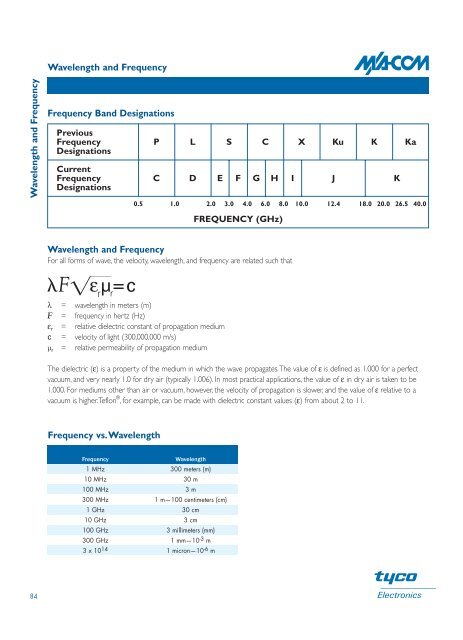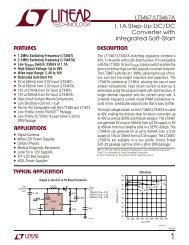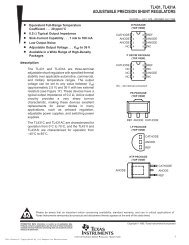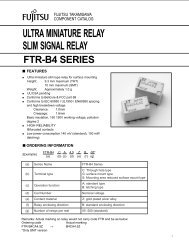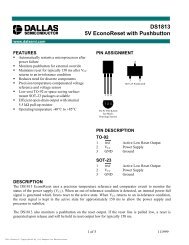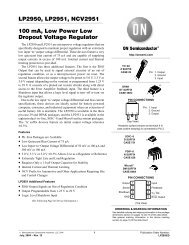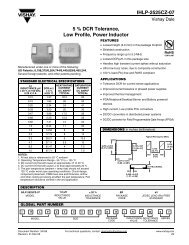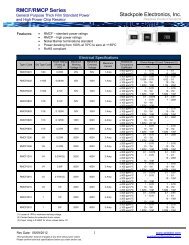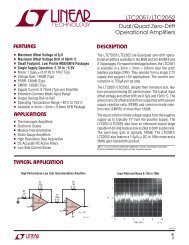Amplifiers
Amplifiers
Amplifiers
Create successful ePaper yourself
Turn your PDF publications into a flip-book with our unique Google optimized e-Paper software.
Wavelength and Frequency<br />
Wavelength and Frequency<br />
Frequency Band Designations<br />
Previous<br />
Frequency P L S C X Ku K Ka<br />
Designations<br />
Current<br />
Frequency C D E F G H I J K<br />
Designations<br />
0.5 1.0 2.0 3.0 4.0 6.0 8.0 10.0 12.4 18.0 20.0 26.5 40.0<br />
FREQUENCY (GHz)<br />
Wavelength and Frequency<br />
For all forms of wave, the velocity, wavelength, and frequency are related such that<br />
λ = wavelength in meters (m)<br />
F = frequency in hertz (Hz)<br />
ε r = relative dielectric constant of propagation medium<br />
c = velocity of light (300,000,000 m/s)<br />
µ r = relative permeability of propagation medium<br />
The dielectric (ε) is a property of the medium in which the wave propagates.The value of ε is defined as 1.000 for a perfect<br />
vacuum, and very nearly 1.0 for dry air (typically 1.006). In most practical applications, the value of ε in dry air is taken to be<br />
1.000. For mediums other than air or vacuum, however, the velocity of propagation is slower, and the value of ε relative to a<br />
vacuum is higher.Teflon ® , for example, can be made with dielectric constant values (ε) from about 2 to 11.<br />
Frequency vs.Wavelength<br />
Frequency<br />
Wavelength<br />
1 MHz 300 meters (m)<br />
10 MHz 30 m<br />
100 MHz 3 m<br />
300 MHz 1 m—100 centimeters (cm)<br />
1 GHz 30 cm<br />
10 GHz 3 cm<br />
100 GHz 3 millimeters (mm)<br />
300 GHz 1 mm—10 -3 m<br />
3 x 10 14 1 micron—10 -6 m<br />
84


